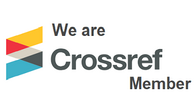Kesalahan fonologi mahasiswa Vietnam tingkat BIPA 1 dalam pelafalan fonem bahasa Indonesia
Abstract
Different languages have different phonetic systems, this is the distinguishing feature of a foreign learner in learning a second language. This paper describes the phonological errors of Vietnamese students after surveying Indonesian by recording pronunciation based on the distribution of phonemes to several students from The Open University. The data was then reduced based on the consistency of students' pronunciation errors in the three participants. Every word that was successfully pronounced correctly by the three participants was considered to have been represented and was able to be pronounced by Vietnamese students. Data reduction is based on the possibility of errors that occur continuously in Indonesian foreign speakers. The results showed that students had pronunciation errors, especially the phonemes /sy/ and /r/. Based on the Vietnamese phonetic system, the author observes that students can improve their Indonesian language skills through practice with several applications on the Internet, for example, the writing application of phonetics.glideapp.io
Keywords
Full Text:
PDF (Bahasa Indonesia)References
Arifin, E. Z., Sumarti, Rokhayati, R., & Muzaki, A. (2017). Fonologi Bahasa Indonesia. Pustaka Mandiri.
Ashby, P. (2021). The International Phonetic Alphabet. Speech Sounds, 71–76. https://doi.org/10.4324/9780203137437-14
Bahmanpour, K., Faramarzi, S. O., & Naghipour, R. (2010). Finiteness properties of local cohomology modules and generalized regular sequences. Journal of Algebra and Its Applications, 9(2), 315–325. https://doi.org/10.1142/S0219498810003951
Byram, M., & Parmenter, L. (2012). The Common European Framework of Reference: The globalisation of language education policy (Vol. 23). Multilingual matters.
Chaer, A. (2009). Fonologi Bahasa Indonesia. Rineka Cipta.
Châu, H. T. (2004). Phương ngữ học tiếng Việt. Đại học quốc gia Hà Nội.
Division, C. of Europe. C. for C. C. E. Committee. M. L. (2001). Common European Framework of Reference for Languages: learning, teaching, assessment. Cambridge University Press.
Gunawan, H. I. (2020). BAHASA INDONESIA: Lingua Franca Pencetak Karakter Negeri. CV. Pena Persada.
Hang, N. T. T. (2018). METODE PEMBELAJARAN KETERAMPILAN BERBICARA BAHASA INDONESIA BAGI MAHASISWA VIETNAM. Prosiding Seminar Nasional Bahasa Dan Sastra Indonesia (SENASBASA), 2(1).
Hendrokumoro, H. (2009). Bahasa Vietnam sebagai Bahasa Nada. Humaniora, 21(2), 11981.
Little, D. (2006). The Common European Framework of Reference for Languages: Content, purpose, origin, reception and impact. Language Teaching, 39(3), 167–190.
Muslich, M. (2008). Fonologi Bahasa Indonesia: Tinjauan Deskriptif Sistem Bunyi Bahasa Indonesia. Jakarta: PT. Bumi Aksara.
NGUYEN, T. T. (2004). Perbandingan sistem fonologi Bahasa Indonesia dan Bahasa Vietnam:: Sebuah kajian kontrastif. Universitas Gadjah Mada.
Nurwicaksono, B. D., & Amelia, D. (2018). Analisis Kesalahan Berbahasa Indonesia Pada Teks Ilmiah Mahasiswa. AKSIS: Jurnal Pendidikan Bahasa Dan Sastra Indonesia, 2(2), 138–153. https://doi.org/10.21009/aksis.020201
Siswanto, Suyoto, & Mukhlis. (2019). Pengantar Fonologi. Cakrawala Media.
Sugono, D. (2017). Bahasa Indonesia Menuju Bahasa Internasional. Fon: Jurnal Pendidikan Bahasa Dan Sastra Indonesia, 11(2).
DOI: https://doi.org/10.26499/jbipa.v4i2.4589
Refbacks
- There are currently no refbacks.
Publisher:
Badan Pengembangan dan Pembinaan Bahasa, Kementerian Pendidikan dan Kebudayaan Republik Indonesia
Address: Jl. Daksinapati Barat 4 No.11, RT.11/RW.14, Rawamangun, Kec. Pulo Gadung, Kota Jakarta Timur, Daerah Khusus Ibukota Jakarta 13220 Phone: +62 (021) 4896558

Jurnal Bahasa Indonesia bagi Penutur Asing (JBIPA) is licensed under a Creative Commons Attribution-NonCommercial 4.0 International License.
View My Stats -->





